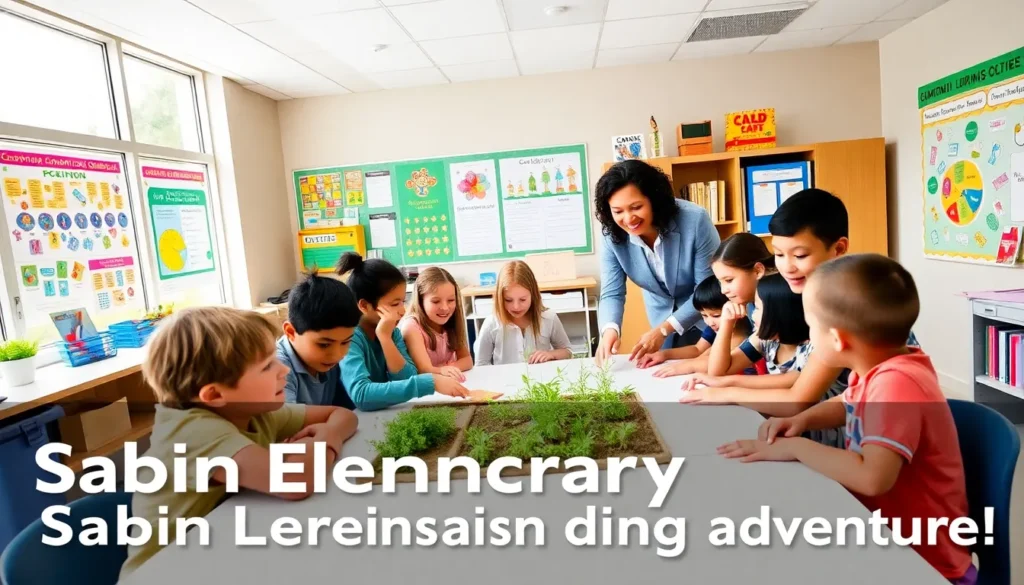Divorce can feel like navigating a minefield, but co-parenting doesn’t have to be rocket science. It’s a bit like teaming up for a group project in school: you might have your differences, but the mission remains the same: ensuring your child thrives. So, how do former partners morph from marital squabbles to co-parenting champs? The answer lies in a strong foundation focused on communication, planning, and a sprinkle of goodwill sprinkled in. Let’s jump into what makes co-parenting work, minus the drama.
Table of Contents
ToggleUnderstanding Co-Parenting Dynamics

Divorce reshapes relationships, especially when kids are involved. Co-parenting dynamics refer to the interactions and strategies parents use to raise their children post-separation. It’s essential to recognize that co-parenting isn’t merely about sharing physical responsibilities. It’s about emotionally supporting each other in the journey of parenting even though personal differences.
Each parent brings unique strengths to the table. They might have different ideas about discipline or educational philosophies. The trick is acknowledging these differences while focusing on what unites them: raising happy, well-adjusted children. Whether it’s celebrating achievements, attending school events together, or figuring out a way to share holidays, these moments create a richer experience for kids.
Of course, understanding co-parenting dynamics also means recognizing what doesn’t work: ongoing conflict and power struggles. These tensions can trickle down to affect the children. If tempers flare, it’s wise to step back, breathe, and remember that cooperation will always yield better results than contention.
The Importance of Effective Communication
Effective communication stands as the cornerstone of successful co-parenting. Parents who keep the lines open can share updates on their children’s activities, schooling, and emotional well-being without a hitch.
Consider creating a shared calendar with important events. This low-tech solution helps keep everyone in the loop. When both parents align on key happenings, like birthdays and recitals, the focus shifts from conflict to collaboration. Plus, who doesn’t love a well-coordinated family calendar?
When discussing the kids, keep it focused. Avoid nuances about your personal lives. Even if you wish to vent about your latest date or business flop, remember that the conversation should center on your offspring. Using neutral language can help avoid misunderstandings. Phrasing like “I noticed he’s been a bit anxious” rather than “Why can’t you handle our child better?” keeps the tone constructive.
Creating a Healthy Co-Parenting Plan
A co-parenting plan is like a parenting GPS. It provides clear directions for navigating the roads ahead, avoiding pitfalls and detours that can lead to stress and confusion.
When drafting a co-parenting plan, include things like a custody schedule, holiday arrangements, and how to handle medical decisions. Clearly outline responsibilities so there are no surprises, kids thrive on predictability. Each of these aspects serves as a touchpoint, helping keep both parents on the same page.
Don’t forget to build in flexibility. Life is anything but predictable, and parenting definitely aligns with that chaos. Being open to adjustments while ensuring the kids’ needs remain central can ease feelings of tension and overwhelm.
Navigating Challenges in Co-Parenting
Smooth sailing rarely exists when it comes to co-parenting. Challenges are inevitable, whether it’s dealing with differing parenting styles, managing new partners, or simply handling life’s curveballs.
One major hurdle is blending new relationships into the co-parenting mix. New partners can bring fresh perspectives, but they can also complicate existing family dynamics. It’s crucial to navigate these waters carefully, introducing them slowly, and prioritizing the child’s comfort.
Also, disagreements are bound to arise. When this happens, approaching each situation with empathy can make a massive difference. Instead of assigning blame, consider discussing feelings and working toward a solution together. Practicing patience in these scenarios can prevent conflicts from escalating.
Strategies for Successful Co-Parenting
So, what’s the secret sauce for effective co-parenting? Here are some strategies to consider:
- Stay Consistent: Consistency provides a sense of security for children, so establish routines that work harmoniously in both households.
- Incorporate Problem-Solving Skills: Equip children with tools to express feelings, encouraging them to communicate rather than suppress emotions.
- Be Respectful: Speaking well of your co-parent in front of the children substantially impacts their perception. A child’s emotional well-being is paramount, and fostering a positive narrative helps tremendously.
- Regular Check-ins: Having periodic discussions about what’s working and what isn’t can keep the lines of communication fluid.
Each strategy aims to reinforce trust among co-parents and offer stability for kids.
Legal Considerations and Rights in Co-Parenting
Co-parenting isn’t just emotional: there are legal dimensions that require understanding. Each parent has legal rights concerning custody, visitation, and child support. Familiarizing oneself with these regulations is crucial.
Custody agreements vary by state, but generally encompass both legal and physical custody. Legal custody allows parents to make significant decisions about the child’s upbringing, while physical custody determines where the child lives. Understanding these distinctions can prevent misunderstandings down the road.
If issues arise, especially about compliance with legal arrangements, consulting a family law attorney can clarify rights. Parents have a responsibility to champion their child’s best interests, and being well-informed strengthens that commitment.









